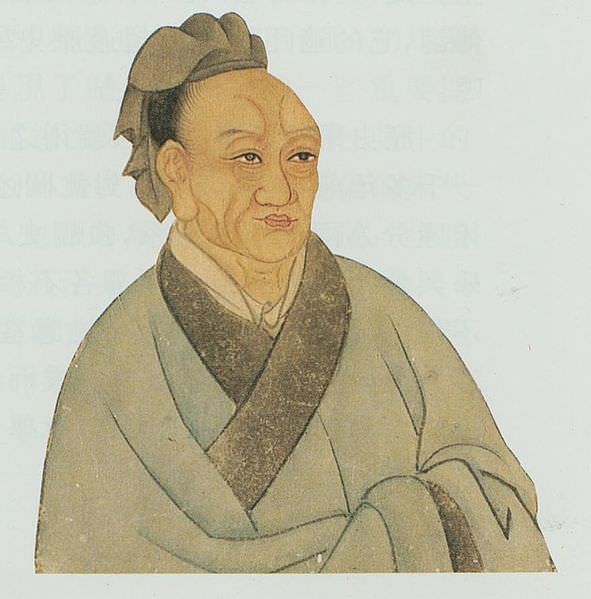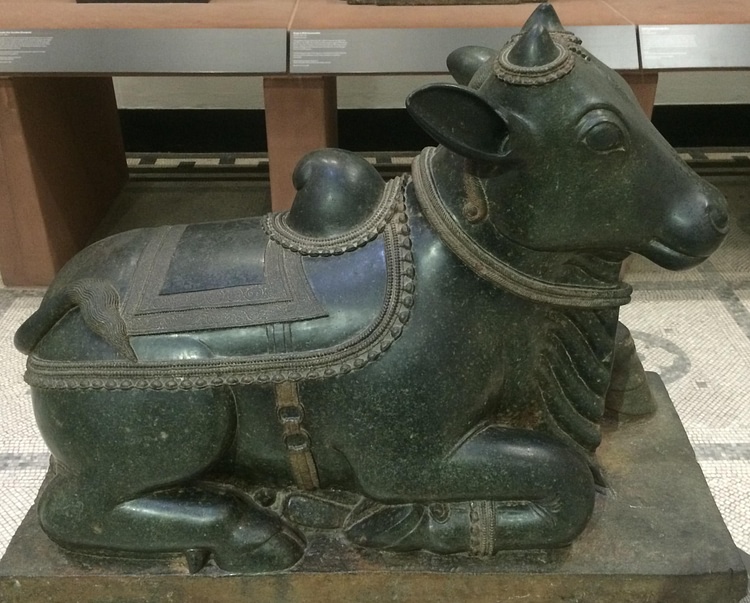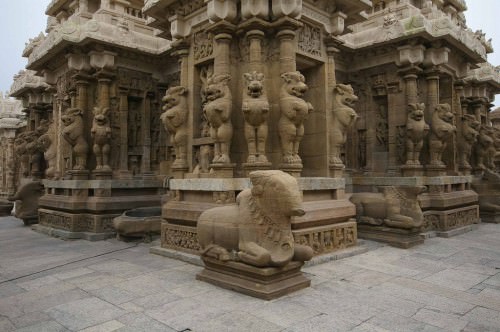Sima Qian › Nandi » Ancient origins
Articles and Definitions › Contents
- Sima Qian › Antique Origins
- Nandi › Ancient History
Ancient civilizations › Historical and archaeological sites
Sima Qian › Antique Origins
Definition and Origins

For history lovers, the valuable gift of China ’s long tradition is largely owed to Sima Qian (c. 145 - 86 BCE). Although he is commonly referred to as a Chinese historian, he was actually the Grand Astrologer at the court of Emperor Wu of Han (r. 141 - 87 BCE). Sima Qian was also the author of China's first comprehensive and systematic book on the history of the world (known by the Chinese at that time).
PERSONAL LIFE
Sima Qian's only known relative is Sima Tan, his father. Nowhere in his autobiography does Sima Qian mention any siblings, mother, wife, or children. Sima Qian was strongly bound to his father who was the Grand Astrologer at the imperial court and he followed in his father's steps by learning the astrologer's profession and himself becoming the Grand Astrologer after his father passed away.
The responsibilities of the office of Grand Astrologer revolved around activities which combined the observation of natural occurrences, record keeping, calendar making, and different forms of divination. During Sima Qian's time, however, the once prestigious office of Grand Astrologer declined in importance. Sima Qian describes his father's work as:
Kept for the amusement and sport of the Emperor, treated the same as the musicians and the jesters, and made light of by the vulgar men of his day.( Shiji, 8.376)
In his autobiography, Sima Qian tells us that he was deeply moved by his father's death. On his deathbed, Sima Tan told his son about an important task which remained unfinished:
I am dying. You must become the Grand Astrologer, and as the Grand Astrologer do not forget that which I have desired to set in order and write [...] The feudal lords have joined together, but their scribal records have been scattered and discontinued. Now the Han has risen and all the world is united under one rule, yet as Grand Astrologer I have not set in order and recorded the glorious sovereigns, worthy rulers, loyal ministers, and gentlemen who died for righteousness. I am fearful that the historical writings of the world will be discarded. You must bear this in mind.( Shiji, 130.3295)
Sima Qian agreed to set in order the historical records; this was the last promise he made to his father. Given what we know about the Grand Astrologer's responsibilities, Sima Tan's desire was more personal than professional.
Once Sima Qian was already performing his tasks as Grand Astrologer, and before he could complete his historical work, an important incident took place. In 99 BCE, a general named Li Ling was sent into barbarian territory leading an army of 5,000 men to fight against nomadic tribes up in the North. The campaign was successful at the beginning but it was followed by total disaster: a combination of heavy casualties, shortage of weapons and food, and a lack of reinforcements forced general Li Ling to surrender. Emperor Wu was furious; the way he saw things, there were only two possible outcomes for generals - either to win or die trying. The courtiers supported Emperor Wu, however, Sima Qian had a different view. He reminded the Emperor about Li Ling's past achievements and claimed that, by surrendering, Li Ling was still able to serve the Emperor, something that only the living could do. After hearing Sima's defence, Emperor Wu was filled with imperial wrath and Sima Qian was charged with “defaming the Emperor”, a crime punishable by death.
During the Han dynasty, it was customary for officials charged of high crimes either to commit suicide or buy their way out of trouble. Neither option pleased Sima Qian as suicide would mean failing his father and his financial resources were not enough to buy his way out; thus, his sentence was changed to castration. There was no greater disgrace for a man than to be castrated, especially for a childless man, given that the funerary rites in China could only be carried out by one's son. His afterlife was thus compromised. On top of the shame and endangering his own condition, castration meant that his family life came to an end. Sima Qian paid this high price in order to complete the work he promised to his father and to honour his father's memory.
SIMA QIAN WAS THE FIRST PERSON ON RECORD WHO APPROACHED HISTORY IN A CAREFUL AND SYSTEMATIC WAY.
THE FATHER OF CHINESE HISTORIOGRAPHY
Chinese culture was already well aware of history, but Sima Qian was the first person on record who approached history in a careful and systematic way. Sima Qian's father had apparently already gathered some material and may even have begun writing, but his project was interrupted by his own death. Being the Grand Astrologer, Sima Qian had full access to the imperial archives so he started to gather the fragments of the past, classifying them and trying to make sense of them. His massive work, known as the Shiji, started to take form. The name Shiji is normally translated as “Records of the Grand Historian”, although some authors who have specialized in Sima Qian's life believe this translation is not fully accurate. The Chinese term shi means scribe or archivist: these officials did record historical events but they did not engage in the interpretation of such events which is the type of task that historians do. Furthermore, Shiji was not originally the name of Sima Qian's work, but was a generic term used for the work of scribal recorders in feudal states. “Records of the Scribes” is a more accurate translation of Sima Qian's work.
For about a decade, Sima Qian worked on his historical project. Sima Qian's final version of the Shiji had a little over half a million Chinese characters. Each Chinese character takes several English words to translate, which means that an English translation of the Shiji would be about the same length as the Bible, written by a single man. It is a history of the entire world as the Chinese knew it, from legendary beginnings to the days of the Han dynasty.
Unlike other civilizations, the creation of the world was not a central issue in Chinese tradition. This is why Sima Qian's work does not begin with an account of the creation of the world, but with a ruler. The beginning of the world and the beginning of civilization are the same thing for Sima Qian. The Shiji includes 130 chapters, each of them divided into five different sections; Basic Annals (chaps. 1-12); Chronological Tables (chaps. 13-22) where events are recorded and coordinated across several states, kingdoms, and feudal domains and the level of detail increases as the chronology gets closer to Sima Qian's time; Treatises (chaps. 23-30) including topics such as music, ritual, astronomy, calendar-making, economics; detailed histories of Hereditary Houses (chaps. 31-60) from the Zhou dynasty to the Han dynasty; Memoirs or Categorized biographies (chaps. 61-130), which are biographies on important figures and families. The last of this history is Sima Qian's own autobiography.
Some authors have pointed out that Sima Qian's work mostly consisted of copying and pasting what other authors wrote before him. It is true that the contents of the Shiji are largely borrowed from other sources. It is equally true that Sima Qian rewrote and organized all this content in a very systematic way. Still, if we cannot grant him the status of a talented writer, we should grant him that of a great editor. However, the most important innovation of Sima Qian is his critical approach to historiography: he evaluates his sources on the basis of rational principles, observation, and primary sources. He even interviewed specialists on different topics and first-hand witnesses of contemporary events that he recorded. He also visited many cities and locations of historical importance in order to have a better understanding of history.
LEGACY & INFLUENCE
Sima Qian's work is the earliest, most complete, historical record of a civilization written by a single man that we know of and it constitutes one of the main sources of historical knowledge of Ancient China. Castration was one important price that Sima Qian paid for completing his work but, by ending his family line, he gained (in the words of Grant Hardy) a 'metaphorical son', the Shiji, his immortal offspring which has kept Sima Qian's name alive since the time of the Han Dynasty which ended in 220 CE.
Just as the Han dynasty had consolidated the Chinese nation under one single progressive rule, so Sima Qian's efforts consolidated the nation's entire historical knowledge in a single work. The Han may have conquered the geography, but Sima Qian conquered the memory of an entire nation.
Nandi › Ancient History
Definition and Origins

Nandi (also Nandin) is the sacred bull calf, gatekeeper, and vehicle ( vahana ) of the Hindu god Shiva. Sculptures of Nandi are a common sight at Hindu temples dedicated to his master, and he is partly responsible for the Hindu reverence for living bulls even today, especially in the state of Uttar Pradesh.
NANDI'S ROLES
According to the Vayu Purana, Nandi is the son of Kasyapa and Surabhi. In the Saura Purana Nandi, his role as Shiva's gatekeeper is described as, 'adorned with all ornaments, glowing like a thousand suns, holding a trident in his hand, three-eyed, adorned with a sliver of the moon, a thunderbolt in his hand, four-armed, like a second Sankara [Shiva]'.
Besides being Shiva's vehicle, Nandi is also the chief of the god's team of ganas or attendants, and consequently he often carries a golden staff of office. His other duties include being the guardian of all quadrupeds and the provider of music as Shiva dances the tandava, the cosmic dance of creation.
NANDI BATTLES INDRA
In the Brhaddharma Purana it is Nandi who, at the command of Shiva, kills the elephant demon Airavata, who actually belonged to the god Indra. Nandi had been given the task of finding a replacement head for the god Ganesha who had lost his in an unfortunate accident involving his father Shiva. Naturally, Indra was not best pleased with this plan and so hurled various projectiles at Nandi to stop him. However, Nandi easily swept aside Indra's mace, trident, and thunderbolt. Indra next gathered his huge army together and subjected Nandi to a fearsome rain of arrows. Nandi, whose body is as hard as rock, was untroubled by this salvo and, laughing nonchalantly, proceeded to lop off Airavata's head anyway. The head was soon added to Ganesha's body, and Shiva was delighted with Nandi's handiwork.

Vimana, Kailasanatha Temple, Kanchipuram
REPRESENTATION IN ART
A statue of Nandi is present as a bull sitting on a plinth in front of most Hindu temples dedicated to Shiva, especially Dravida (Southern) temples. He sits in a dedicated columned pavilion known as a nandi mandapa and is positioned so that he gazes in adoration at Shiva's linga within the main temple. The bull is often dressed by worshippers with bells, clappers, and a necklace of flowers. At Javanese temples Shiva can take the form of a bull, known as Nandi-Kesvara, and he often stands guard holding a trident in one hand and a lotus flower in the other. In Hindu paintings Nandi most often appears ridden by Shiva and has a pure white skin. He also appears with Shiva on 1st-2nd century CE gold coins minted by the Kushanas in Gandhara.
LICENSE:
Article based on information obtained from these sources:with permission from the Website Ancient History Encyclopedia
Content is available under License Creative Commons: Attribution-NonCommercial-ShareAlike 3.0 Unported. CC-BY-NC-SA License